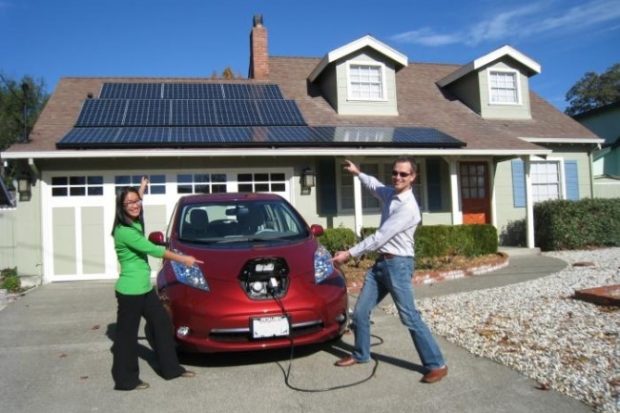
By Tom Frantz
There is no question the earth is warming rapidly because of human activity. Our inability to fully accept this looming disaster has resulted in insufficient public action to quickly reduce and ultimately stop the rate of warming. Of course, greed and immoral leadership around the globe is not helping.
But there is a way forward. Mark Z. Jacobsen of Stanford University is one who has developed a road map for converting all of our energy needs to 100% clean, renewable energy by 2040. He shows how future energy needs can come almost entirely from wind, wave and solar, with specific variations for every state and every country.
The transition from fossil fuel to clean electricity for heating buildings and powering transportation is part of the solution and must be 100% implemented. The dilapidated housing and 20-year-old vehicles associated with low-income residents cannot be left out. If the transition is to be just, it has to be available and affordable for everyone.
The San Joaquin Valley has the poorest residents in the state who happen to have the highest energy needs. The heat and cold of the Valley is extreme compared to the Bay Area and the South Coast. Driving distances are larger as well for rural people such as farmworkers. Also, the exposure to air pollution is worse for them than most other residents in the state.
Simple economics says that government spending should return an economic benefit to society. For example, public schools are cheaper than prisons. Health clinics are cheaper than hospital emergency wards. Fire departments prevent loss of life and property.
Likewise, retrofitting low-income housing with insulation, solar panels (or a share in a community solar project) and electric heat pumps for cooling and heating will ultimately return more than the initial cost. Savings from greater efficiency, the health benefits of cleaner air and fewer greenhouse gases totally pay back the costs.
The same is true for replacing old polluting work cars. The costs of a new electric vehicle that has a range suitable for daily driving (150–200 miles) are less than the costs of a used 10-year-old internal combustion car over 10 years. Greenhouse gases and air pollution are reduced while maintenance, repair and fuel costs for the owner are much lower.
Over the past four years, funds from carbon allowance auctions in California have been appropriated at an average $1.6 billion per year for new and existing programs designed to reduce greenhouse gas emissions. Millions from other funding sources are also appropriated annually to reduce air pollution through incentive funding.
Here are a few examples. Farmers can get a 75% rebate on new electric utility vehicles by turning in similar internal combustion vehicles. Participating farmers give up worn out vehicles. They get to depreciate the new purchase. They will save on fuel costs and repairs while getting a dependable new workhorse for their farm. The program essentially increases farmer profits while eliminating small amounts of pollution.
The same thing happens with tractors. There has been a huge shift the past 30 years from annual crops like cotton to semi-permanent orchards. Row crop tractors that still run, but are not suitable for orchards, can be turned in to the air district for a large subsidy on a new orchard tractor. If a farmer turns in two old tractors, the subsidy is doubled and the new tractor is nearly free. Costs are depreciated, the new equipment increases profits and the pollution decreased is minimal.
San Joaquin Valley dairies are getting up to $2 million each to build methane digesters over their liquified manure sewage treatment lagoons. These digesters capture a small fraction of the total methane emissions at the dairy and actually increase local air pollution when the gas is burned. But they add to the profitability of the already heavily subsidized dairy.
A just transition to a zero carbon future demands that 10%–20% of the money given to businesses each year go instead to electrification programs designed for low-income families. Both electric vehicles and electric homes are essential for every residential unit in the state. Every community needs solar roof installations or shared community solar systems.
Low-income recipients do not have down payments, but they could pay back 25% of costs with 10-year zero-interest repayment plans. They would still realize savings on transportation and home energy costs. The conversion of homes and vehicles to electricity guarantees emission reductions of both greenhouse gases and air pollution—unlike some of the current programs.
To summarize, an official low-income family of four (with household income less than $56,000) cannot afford the initial costs of an electric vehicle or an upgraded home with electric heat and solar panels. But providing these essentials to families with minimal cost is a win-win for disadvantaged communities across the Valley.
The family has more disposable income providing an economic boost to the local economy. Air pollution is reduced with resulting health benefits. Finally, greenhouse gas emissions are reduced.
Using a combination of money from California’s Greenhouse Gas Reduction Fund and incentive funding for reducing air pollution, the transition can be done over 20 years. Only the political will to do justice is currently lacking.
*****
Longtime clean air advocate Tom Frantz is a retired math teacher and Kern County almond farmer. A founding member of the Central Valley Air Quality Coalition (CVAQ), he serves on its steering committee and as president of the Association of Irritated Residents. The CVAQ is a partnership of more than 70 community, medical, public health and environmental justice organizations representing thousands of residents in the San Joaquin Valley unified in their commitment to improving the health of Californians. For more information, visit www.calcleanair.org.
